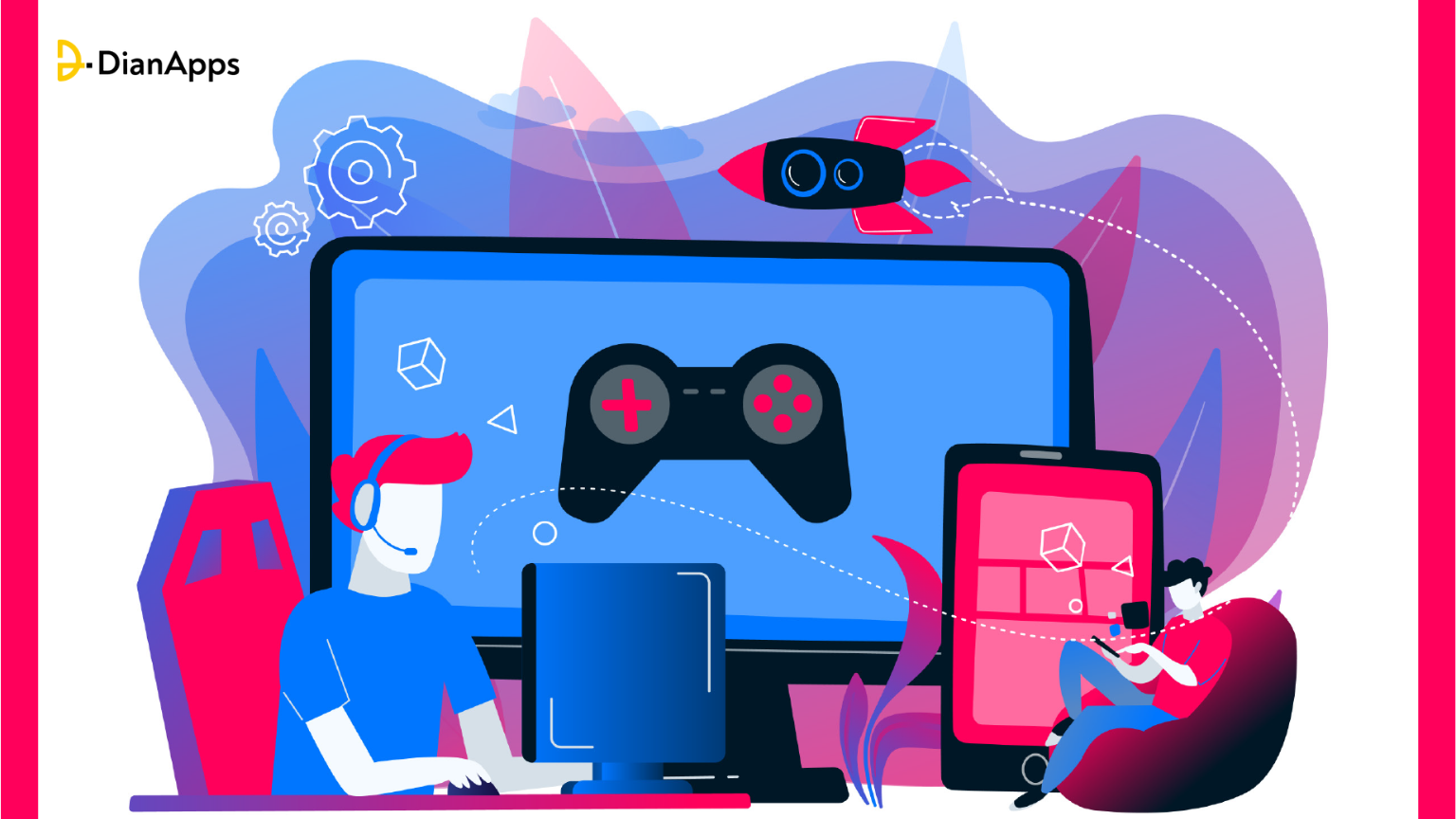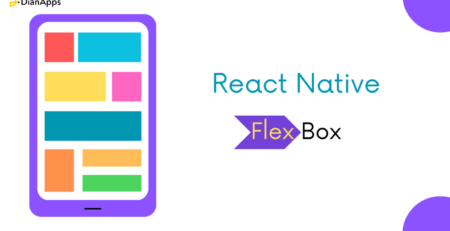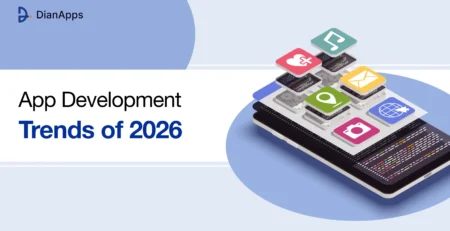How to Build a Sports Live Streaming App: Key Features & Challenges
When millions of Australians choose to stream live AFL (Australian Football League), NRL, or cricket matches on mobile devices instead of traditional TV, one thing is clear: sports viewing in Australia has gone completely digital.
Today’s fans expect more than just live footage. They want real-time updates, seamless streaming, interactive features, and access from any device, all delivered without interruptions.
This shift in user behaviour has opened up a major opportunity for businesses and broadcasters to invest in the future of fan engagement through smart digital products.
As a leading sports app development company, we at DianApps understand the complexities of building powerful live streaming platforms. From designing scalable infrastructures to integrating rich, user-first features, we build experiences that meet the rising demands of Australian sports fans.
Here are some quick figures to show just how massive this space is:
- Kayo Sports has already crossed over 1.5 million users
- In just one weekend, Australians streamed more than 900 million minutes of sports content
- The appetite for on-demand and mobile-friendly sports access continues to grow rapidly.
But creating a successful sports streaming app takes more than just video delivery. It requires the right technology, performance strategy, and deep market understanding.
In this blog, we’ll take you through everything you need to know, from emerging trends and platform types to essential features, real-world challenges, monetisation models, and the actual cost of building a high-performing sports app for the Australian market.
Interesting Live Streaming App Market Statistics

(Source)
- Global market hit USD 33.9 billion in 2024 and is projected to grow at a 12.6% CAGR through 2030.
- The broader live‑streaming space is expected to jump from USD 1.76 billion in 2024 to USD 2.11 billion by 2025 at a 19.7% CAGR .
- In Australia, the sports‑event industry (broadcasts, ticketing, merchandise) is worth around USD 746 million in 2025.
- Australia’s overall sports industry clocks in at roughly AUD 17.8 billion for 2025 .
- Kayo Sports now commands over 1.5 million subscribers and draws around 2.5 million monthly unique viewers
Recommended Read: Video Streaming App Development: Cost, Factors, and Development Guide
Different Types of Sports Live Streaming Applications
Different types of sports streaming applications ensure to offer smooth access across multiple platforms. Let’s explore different types of streaming applications:
Dedicated League Apps
These apps are built specifically for individual sports leagues such as the AFL (Australian Football League), NRL (National Rugby League), or BBL (Big Bash League). They offer exclusive live matches, real-time scores, team updates, player stats, and news, all tailored for die-hard fans of a particular league.
Multi-Sport OTT Platforms
OTT platforms like Kayo Sports provide access to multiple sports in one app. Users can stream live events, catch replays, switch between games, and enjoy tailored features such as split-screen viewing, match summaries, and multi-camera angles across various sports.
Broadcaster Companion Apps
Developed by networks like Channel 7 or Nine, these apps support live sports streaming alongside regular television broadcasts. They often offer free or ad-supported content and are ideal for users looking to extend their viewing experience beyond the living room.
Niche or Regional Sports Apps
These apps cater to fans of less mainstream or regional sports like surfing, netball, or motorsports. They focus on a loyal audience base and provide exclusive content that’s often overlooked by larger platforms, helping grow niche communities digitally.
Fantasy Sports with Live Streaming
Apps that blend fantasy gaming with live streaming allow users to manage their fantasy teams while watching games in real time. This combination increases engagement, competitiveness, and retention, making the experience more immersive for sports fans and gamers alike.
Recommended Read: How to Create a Live Streaming App: Features, Monetization Models, and More!
On-Demand Sports Libraries
Rather than focusing on live matches, these platforms offer highlights, full-match replays, player interviews, and expert analysis. They’re perfect for fans who prefer flexible viewing schedules or enjoy revisiting past games, key moments, and behind-the-scenes content.
Most Popular Examples of Sports Live Streaming Applications
Australia’s sports streaming landscape has grown rapidly, with several platforms leading the charge in innovation, user experience, and content variety. These apps are not only transforming how Australians watch live sports but also setting clear expectations for future digital platforms.
Here are some of the most popular sports streaming apps in Australia:
Kayo Sports
One of the most dominant players, Kayo offers live and on-demand streaming for over 50 sports, including AFL, NRL, cricket, basketball, and motorsport. With features like SplitView and Key Moments, it’s built specifically for hardcore fans.
7plus
Channel 7’s official app streams live AFL games, horse racing, and major international events like the Olympics. It’s free to use and accessible across multiple devices, making it a great choice for casual viewers.
Optus Sport
This app is a go-to for football lovers. It offers exclusive access to the English Premier League, UEFA Champions League, and more. Its clean UI and expert analysis features add to its value.
Stan Sport
Popular for rugby, tennis, and motorsport coverage, Stan Sport offers both live matches and replay options. It’s bundled with Stan’s entertainment subscription, making it convenient for existing users.
Foxtel Go
A companion app for Foxtel subscribers, this platform offers streaming for a wide range of sports content. It supports mobile, web, and smart TV access, giving users flexibility in how they watch.
Benefits of Developing a Live Streaming Application
Here are various advantages of developing a live streaming application in Australia:
Wider Audience Reach
Live streaming apps allow you to connect with sports fans across cities, regions, and even countries. Viewers can tune in from anywhere, increasing your brand’s visibility and reach.
Real-Time Fan Engagement
Interactive features like live chats, polls, scoreboards, and social media sharing boost engagement and keep users hooked throughout the event.
Monetisation Opportunities
Whether through subscriptions, in-app ads, or pay-per-view models, streaming apps offer multiple revenue streams that can scale with your audience size.
Brand Loyalty and User Retention
A smooth and reliable app keeps users coming back. Features like match reminders, personalized content, and exclusive access help strengthen long-term loyalty.
Data-Driven Insights
You gain valuable analytics on viewer behaviour, preferences, and engagement patterns, helping improve both app performance and marketing strategies.
Competitive Edge in the Market
Offering a high-quality streaming experience positions your brand as innovative and user-first, setting you apart from slower-moving competitors.
Flexible Content Delivery
Whether it’s live matches, highlights, or replays, users can consume content on their terms, enhancing satisfaction and convenience.
Important Features for Live Sports Streaming App
To build a sports streaming app that truly stands out in the Australian market, the following features are essential:
High-Quality Live Streaming
Ensure uninterrupted, high-definition video delivery with minimal buffering. Adaptive bitrate streaming helps adjust video quality based on internet speed, ensuring smooth playback for all users.
Multi-Sport and Multi-Event Access
Allow users to access different sports and switch between live games. This improves flexibility and increases user engagement, especially during overlapping events.
Real-Time Score and Stats
Integrate live scores, player stats, and team rankings. This keeps users informed and enhances the match-viewing experience with constant, updated insights.
Interactive User Experience
Include features like live chat, fan polls, reactions, and social sharing. These create community engagement and make the app more than just a video player.
Push Notifications and Reminders
Alert users before matches start, share live score updates, and inform them about highlights or content drops. This keeps users coming back regularly.
Replay and Highlight Sections
Many fans want to rewatch key moments. Provide short highlight clips and full-match replays for on-demand access.
Multiple Language and Commentary Support
Offer different language options or alternate commentaries for diverse audiences across regions.
User Profiles and Personalisation
Let users customise their feed based on their favourite sports, teams, or players for a more tailored experience.
In-App Purchases and Monetisation Options
Add subscription plans, pay-per-view events, or ad-free upgrades to create flexible revenue models.
Security and Content Rights Protection
Use encryption and DRM (Digital Rights Management) to protect video content and prevent unauthorized sharing or downloads.
Steps to Build a Sports Live Streaming App
Developing a sports live streaming app is a multi-stage process that goes far beyond video delivery. It involves strategy, design, development, testing, and ongoing optimization—all aligned with user expectations and technical performance. Here’s a detailed step-by-step breakdown:
Define Your Vision and Target Audience
Begin by defining the purpose of your app. Will it stream one sport or multiple? Is it focused on a single league, like the AFL, or broader, like Kayo Sports? Identify your audience: casual fans, hardcore followers, or fantasy players. This will help shape every future decision—from features to UI design.
Also, consider whether your content will be national, regional, or global. For example, an app targeting Australian cricket fans may need different features than one focusing on local rugby league games.
Perform Competitive and Market Research
Study top apps like Kayo Sports, Optus Sport, and 7plus to understand what users love—and what they don’t. Explore their feature sets, monetisation models, customer reviews, and UX strategies. This research helps you identify both gaps in the market and opportunities to stand out.
It’s also important to track current trends in video streaming, such as AI-based recommendations, interactive fan features, and voice-controlled navigation.
Choose Your Monetisation Model Early
Decide how your app will make money before development begins. Some of the most common options include:
- Subscription-based: Monthly or yearly plans for unlimited access
- Freemium: Free access with optional paid features or ad removal
- Pay-per-view: One-time payment for special matches or tournaments
- Ad-based: Free streaming supported by in-stream or banner ads
Choosing the right model affects both your app architecture and user experience design.
Plan the Core Features and User Experience
Work closely with a UI/UX design team to outline your app’s structure. Focus on creating an intuitive layout, fast navigation, and visually engaging interfaces. Essential features to include are:
- High-quality live video streaming
- Real-time scores and stats
- Push notifications for match alerts
- Replay and highlight sections
- In-app chat or social features
- Multi-language commentary support
- Personalised dashboards for teams and players
Make sure your design is accessible across different devices, especially mobile, which is where most users stream content in Australia.
Select the Right Technology Stack
A solid tech foundation is critical to deliver uninterrupted performance during live streams. Choose technologies that support low latency, quick loading times, and high scalability. Typically, the stack includes:
- Frontend: React Native or Flutter (for cross-platform apps)
- Backend: Node.js, Django, or Ruby on Rails
- Streaming Server: Wowza, Amazon IVS, or Mux
- Database: MongoDB, PostgreSQL, or Firebase
- Cloud Hosting: AWS, Google Cloud, or Azure
- CDN (Content Delivery Network): Cloudflare or Akamai for faster global content delivery
Your tech stack should also include strong encryption protocols to secure user data and content rights. Here, you will also come to know why Australian businesses switch to React Native for the smooth success of the business.
Secure Content Rights and Licensing
If you’re streaming official matches, securing broadcasting or digital rights is essential. This involves contacting the rights holders, whether it’s sports federations, leagues, or media companies, and negotiating the terms of use.
Without the proper rights, your app could face legal issues or takedowns. This step must be planned well in advance.
Start with MVP Development
Begin by building a Minimum Viable Product (MVP), a version of the app with core features. This allows you to launch faster, gather feedback, and improve before a full-scale release.
The MVP should include:
- Live match streaming
- User registration and login
- Basic notifications
- One or two key sports categories
- Admin dashboard for content control
Focus on stability and performance during this phase, especially with real-time video delivery.
Recommended Read: Why an MVP is an Important Part of the Mobile App Development!
Test Across Devices, Networks, and Load Conditions
Thorough testing is non-negotiable for a live streaming app. Test under various network conditions (4G, 55G, Wi-Fi), on different devices (iOS, Android, tablets), and with simulated user spikes (stress testing during game starts or finals).
Also include:
- Unit testing for individual modules
- UI/UX testing to ensure smooth navigation
- Security testing to avoid data leaks and piracy
- Beta testing to gather real user feedback before public release
Launch Strategically
Plan your app launch around major sporting events in Australia for maximum impact. Whether it’s the AFL Grand Final or cricket season, timing your release with fan interest can dramatically boost your visibility.
Make sure to support the launch with strong marketing efforts through social media, influencer partnerships, SEO, and app store optimization.
Monitor, Scale, and Improve
Once your app is live, your job isn’t over. Use analytics tools to track:
- Viewer engagement
- Session duration
- Peak streaming hours
- User retention
- App crashes or playback issues
Key challenges of video streaming application development
Building a sports live streaming app is exciting, but it also comes with its share of technical and operational challenges. To deliver a smooth, high-performance experience—especially during live matches—developers need to be prepared for these common obstacles:
Low Latency and Real-Time Delivery
Sports fans expect action in real time. Even a few seconds of delay can lead to spoilers, frustration, and app abandonment. Achieving low-latency streaming across different network speeds and devices is one of the biggest challenges in app development.
Handling Traffic Spikes
Big games attract massive traffic within seconds. If the app isn’t built to scale dynamically, it can crash under pressure. Ensuring infrastructure stability during peak load is crucial, especially during finals or high-stakes matches.
Content Licensing and Legal Compliance
Streaming official sports events requires strict legal agreements. Acquiring and managing rights, especially across multiple leagues or broadcasters, can be complex and often expensive. One mistake can result in legal takedowns.
Cross-Platform Compatibility
Your app must perform consistently across iOS, Android, tablets, and smart TVs. Optimising the experience for every screen size and OS version adds extra layers of complexity to the development process.
Video Quality vs. Bandwidth Management
Balancing high-definition video with users’ varying internet speeds is tricky. Developers must implement adaptive bitrate streaming to ensure smooth playback without compromising quality or overloading mobile data usage.
Security and Piracy Prevention
Piracy is a major concern in live sports streaming. Securing your app with encryption, DRM, and anti-capture measures is necessary to protect your content and satisfy legal rights holders.
In-App Engagement Without Distraction
Adding interactive features like chat, polls, or fantasy tracking enhances the user experience. But if not implemented carefully, they can clutter the interface or distract from the game. Designing with balance is key.
Ongoing Maintenance and Updates
Streaming technology evolves fast. Keeping the app updated with new features, fixing bugs, and maintaining compatibility with changing operating systems is a long-term commitment that requires consistent investment.
Cost of Developing a Live Streaming App
The total cost of developing a sports live streaming app can vary depending on the app’s complexity, feature set, design requirements, and backend infrastructure. Below is a general breakdown to help you estimate the investment needed:
| Component | Estimated Cost | Description |
|---|---|---|
| UI/UX Design | $8000 - $15,000 | Includes wireframes, user flow, and visual design for multiple devices. |
| Frontend Development | $15,000 - $30,000 | Cross-platform coding using Flutter, React Native, or native frameworks. |
| Backend Development | $20,000 - $40,000 | Core logic, APIs, user management, and database setup. |
| Video Streaming Integration | $10,000 - $25,000 | Live video player, adaptive bitrate, and CDN setup for smooth playback. |
| Real-time Features | $5,000-$12,000 | Score updates, chat, push notifications, and in-app interactions. |
| Admin Dashboards | $4,000 - $10,000 | A panel to manage users, content, matches, and analytics. |
| Testing & QA | $4,000 - $8,000 | Cross-platform testing, performance tuning, and bug fixing. |
| Cloud Hosting & CDN Setup | $3,000 - $7,000+ | Infrastructure for scalable performance during high-traffic matches. |
| Maintenance & Updates | $2,000 - $5,000 | Ongoing improvements, bug fixes, and support post-launch. |
Final Words
As more Australians turn to mobile devices to watch their favourite sports, the demand for high-quality live streaming apps continues to grow. From securing streaming rights and building real-time features to handling massive user traffic during major matches, the development journey requires deep technical expertise and strategic planning.
Partnering with an experienced mobile app development company like DianApps ensures your sports streaming platform is not only feature-rich but also scalable, secure, and tailored for what the Australian audience expects. Whether you’re building for AFL fans or covering multi-sport content, the right team can turn your idea into a winning product.




